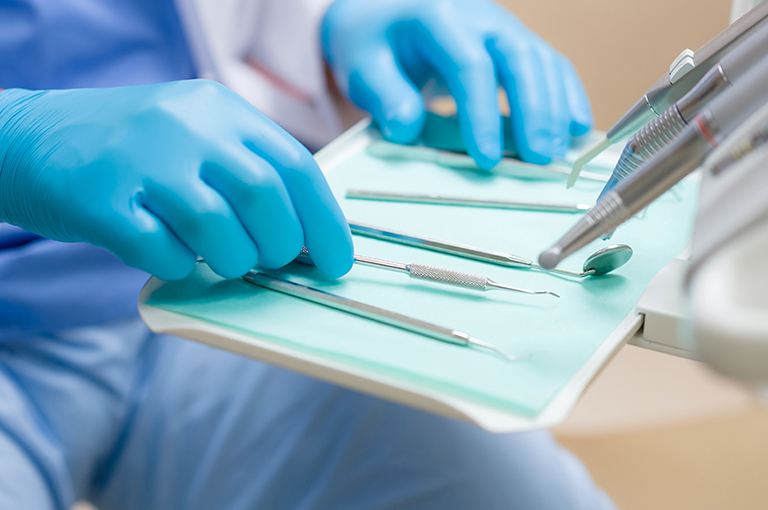Dental patient management aimed at preventing coronavirus

Do you know what is the best way to manage dental patients for Coronavirus prevention? What forms of prevention should the dentist take in times of pandemic? Throughout this text you will be well informed enough to make your calls in a safe and practical way. Come on?
1.What is the coronavirus?
2.Coronavirus or COVID-19?
3.Why is there so much attention from health entities about COVID-19?
- Coronavirus prevention measures for the general population
- What forms of prevention against the coronavirus should be taken by the Dental Surgeon?
-
What is the coronavirus
According to WHO (2020), coronavirus (CoV) is a family of viruses that can cause disease in both humans and animals. In humans, this family of viruses is known to cause respiratory problems, ranging from a common flu to diseases such as Middle East Respiratory Syndrome, which started in Saudi Arabia, with a 40% mortality rate.
The coronavirus family is characterized as a zoonosis, that is, it is transmitted between people and animals. In this sense, several viruses of this family have been discovered that circulate among animals and that have not yet reached people.
However, there are several common signs among the diseases caused by these viruses such as: fever, cough, shortness of breath and difficulty in breathing.
-
Coronavirus or COVID-19?
Coronavirus is about the family, while COVID-19 is an abbreviation for “coronavirus disease”, identified in humans for the first time in 2019.
About COVID-19, it is transmitted from person to person from droplets of secretions, either by sharing objects, or even touching surfaces that contain these droplets.
-
Why is so much attention from health authorities about COVID-19?
Currently, the cases of COVID-19 are already present in more than 148 countries, and with more than 76 thousand deaths registered worldwide so far. And according to the WHO, that number of infected and dead is expected to grow. (Data taken from the WHO website).
The director-general of the World Health Organization, in declaring Pandemic, justified his speech by saying that he was concerned both with the severity of the cases and with the “lack of action” of the countries and agencies.
To give an overview of the WHO decision, the last time a Pandemic was declared was in 2009 with H1N1 when the infected rate was 30,000 in 74 countries.
It is also important to note that the highest mortality rate of COVID-19 is in the elderly, and people with pre-existing medical conditions
In general, declaring Pandemic does not serve to declare panic, but rather, to make health authorities and guardians have a more focused view of the outbreak and with measures that can control it.
-
Coronavirus prevention measures for the general population
The entire population needs to be careful with contamination, and for that, there are some preventive measures established by WHO:
- Clean your hands carefully and regularly, either with soap and water, or even with gel alcohol.
- Stay at least 1 meter away from people sneezing or coughing
- Avoid touching the eyes, nose and mouth as much as possible, so as not to transport the droplets of contaminated people to these mucous membranes.
- Stay at home if you are not feeling well, if you have symptoms such as coughing and breathing difficulties it is recommended to go to a nearby hospital or health center.
If possible, avoid national and international travel, especially if you are elderly, diabetic, cardiac or have respiratory diseases.
-
What forms of prevention against the coronavirus should be taken by the dental surgeon?
Although dental care has been suspended in many regions, emergency care continues to exist, so it is necessary to take extra care with contamination in times of pandemic. Following is the protocol released by the São Paulo Association of Dental Surgeons on the prevention of COVID-19:
- Use a mask with N95 valve, or if you continue to use the regular mask, you must change it every 2 hours;
- Reinforce the use of PPE, including the lab coat, mask, hat, gloves and goggles. And remembering to wash your lab coat separated from everyday clothes, so as not to contaminate them;
- Wash your hands thoroughly before and after consultations;
- After consultation, disinfect all surfaces immediately;
- Take extra care in handling molds and models, ensuring their correct disinfection;
- Strictly follow all disinfection and sterilization protocols;
- Avoid compliments such as: kisses or handshakes in the consultation;
- Try to keep all surfaces of the office permanently clean and disinfected, as the virus can be carried by aerosols and survive on these surfaces for up to 9 days.
Source: Editora Sanar. Available at: https://www.editorasanar.com.br/blog/manejo-do-paciente-odontologico-visando-prevencao-coronavirus. Access on: 04/09/2020.
Image: File
